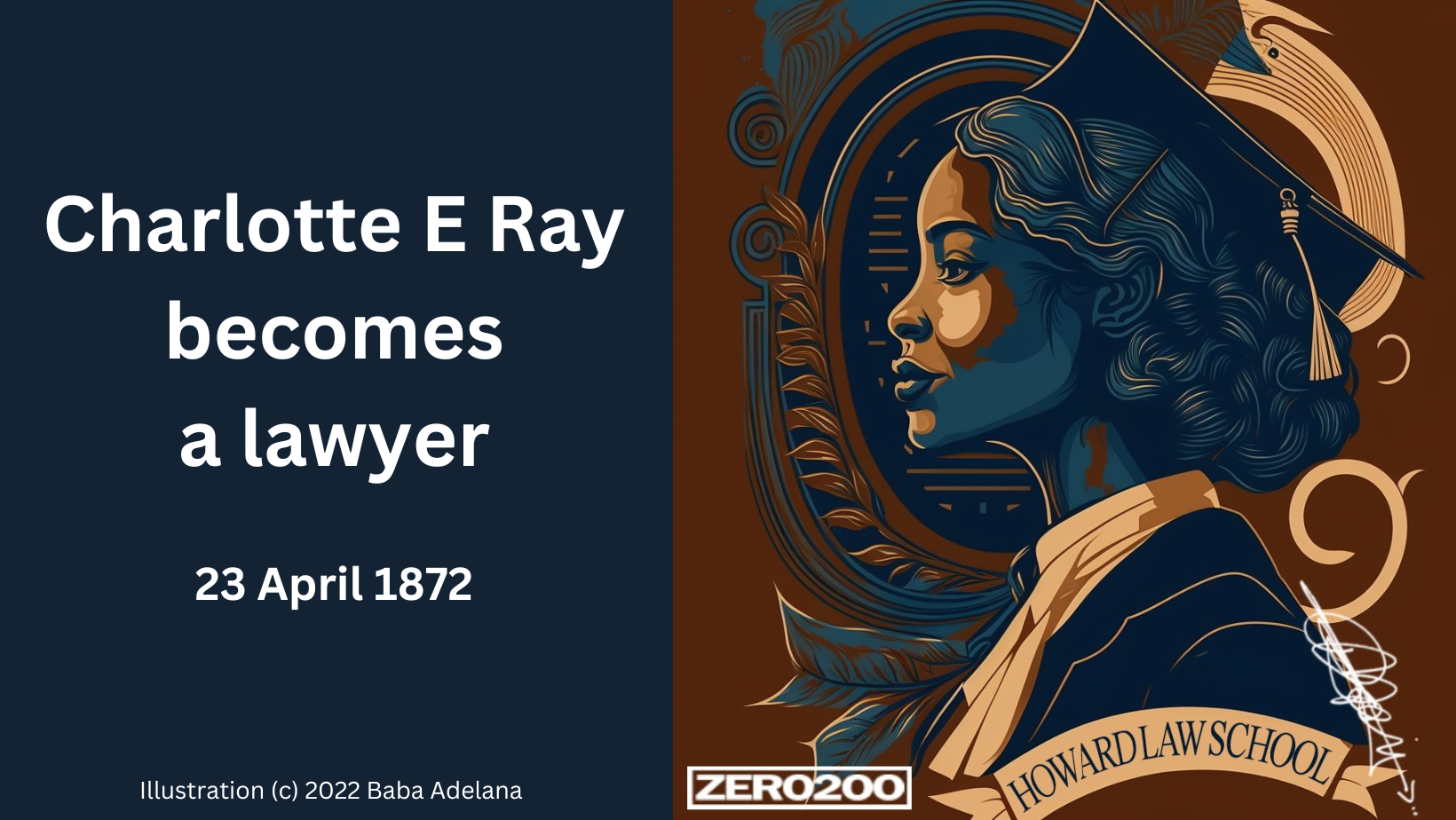The first African-American woman to be Attorney General of the USA, Loretta Lynch, was appointed on 23 April 2015 in Washington DC. The very same day, 143 years earlier in 1872, Charlotte E Ray became the first African-American woman admitted to practice law in the USA.
Sometimes history throws up these little co-incidences. This one gives us the opportunity to look at two very different law careers available to a Black woman in the USA.
Charlotte E Ray – the first Black woman lawyer in the USA
Charlotte E Ray was born in 1850 in New York City. Her father was a clergyman, the editor of an abolitionist newspaper and someone involved in helping people who had escaped slavery through the Underground Railway. One of seven children, Charlotte was one of three girls who survived to adulthood. All three sisters attended college and became teachers.
Howard University is one of the historically Black colleges and universities that provided higher education at a time when Black students were barred from white universities. It had a Normal and Preparatory Department which helped potential undergraduates prepare for university by giving them the minimum level of achievement in reading and writing. Ray became a teacher in the department.
And it was whilst teaching there that Charlotte applied for, and was accepted into, Howard School of Law. It’s popularly suggested that she applied as C E Ray, using only her initials to obscure her sex. However, even the most contemporary records found to date are unclear on if this was a deliberate move or not.
Mary Ann Shadd Carey claimed to have studied law at Howard before Ray but to have been denied a graduation. Some historians suggest Ray used her initials to bypass similar discrimination. Ray studied law in the evenings, whilst still teaching by day, for three years. It seems unlikely she could have done so without someone noticing that the C E Ray law student was also Miss Charlotte E Ray from the prep department.
Whatever the reason for the use of initials, Ray was the first Black woman to graduate from Howard University’s School of Law in February 1872. She immediately applied to the bar in the District of Columbia.
Ray raises the bar
The bar is the line that separates spectators at a law court from those involved in the case. It comes from medieval Europe where it was literally a wooden bar across the space. Being “called to the bar” means being allowed to practise law in court.
In England and Wales, lawyers who wish to become barristers – that is to practice law in the courtroom – must belong to and study at one of the four Inns of Court. Women were only admitted to the Inns after the Sex Disqualification Removal Act in 1919. So no women were called to the bar in England and Wales until 1922.
In the USA, the bars are administered at a state level, with a bar association for each one. In the state of DC, back in 1872, the word ‘male’ had just been removed from the legal code so that women could be admitted.
Ray’s admission to the bar, whilst receiving press coverage, went through without debate. She opened her practice, advertised her services in Frederick Douglass’s newspaper, and…struggled. She could not drum up enough business to keep going. A near-contemporary lawyer, Kate Kane Rossi, put this down to prejudice. By 1879, she had returned to New York City and to teaching. She died in 1911.
Loretta Lynch – Attorney General of the USA
Loretta Lynch was born just over a century after Ray, in 1959, in North Carolina. Like Ray, her father was in the clergy. She graduated from Harvard, having studied English and American Literature, in 1981 before taking her law doctorate at Harvard Law School in 1984. Harvard Law School started admitting Black students in the 1870s but did not admit women until the 1950s.
After some time in private practice, Lynch joined the US Attorney’s office in 1990 and rose to became US Attorney for the Eastern District of New York. She was appointed as the Attorney General of the United States in 2015.
The Attorney General heads up the US Department of Justice. They’re also the chief law enforcement officer of the federal government and the principal advisor to the President. Whereas Ray’s admittance to the bar in 1872 passed with no record of contention, Lynch’s confirmation process took 166 days. She was quizzed on her involvement in high profile cases and on immigration policy. Her appointment ended when Donald Trump became US President on 20 January 2017.
What do these parallel stories, separated by over 140 years, tell us?
This year, 2024, Loretta Lynch delivered the Charlotte E Ray keynote speech on corporate law at Howard University and reflected on the parallels.
“[Ray] is the perfect inspiration, not just for this conference but for these times. And were she to be here today, I know she would rejoice at the many advancements in equality and opportunity that we have today, but there is so much within our world that she would still have recognized.”
Watch the whole keynote speech online.
Ray’s admission to the DC bar was used by other women to make their case for admission across the United States. So whilst Ray’s career as a lawyer may have stalled in the economic downturn of the 1870s, her legacy is everywhere.
A photo of Charlotte E Ray
A note on the art used here. No photo of Charlotte E Ray exists. There’s a commonly used photo, which is actually of opera singer Marian Anderson. My doubts over the commonly used photo were that it showed a young woman with a shingle haircut. That’s a cut, similar to a bob, which only became common in the 1920s. Ten years after Ray’s death. Had she been alive, she’d have been in her 70s. It would be like using a photo of Clara Bow whilst saying it is Millicent Fawcett.
There’s a great piece debunking the misattributed photos (there are several others that people use) on fake history hunter’s blog. They highlight that using other Black women’s’ photos is not recognising them for their own achievements. We’ve followed their suggestion to use Baba Adelana’s recent artwork, along with the illustration that is of unknown origin.
Follow us on Mastodon, BlueSky, Facebook or Instagram to get daily posts about the women who made – and are making – history every day.
Sources
Charlotte E Ray: A Black Woman Lawyer by Tonya Michelle Osborne (2001). https://wlh-static.law.stanford.edu/papers/RayC-Osborne01.pdf
https://www.justice.gov/ag/bio/attorney-general-loretta-e-lynch

